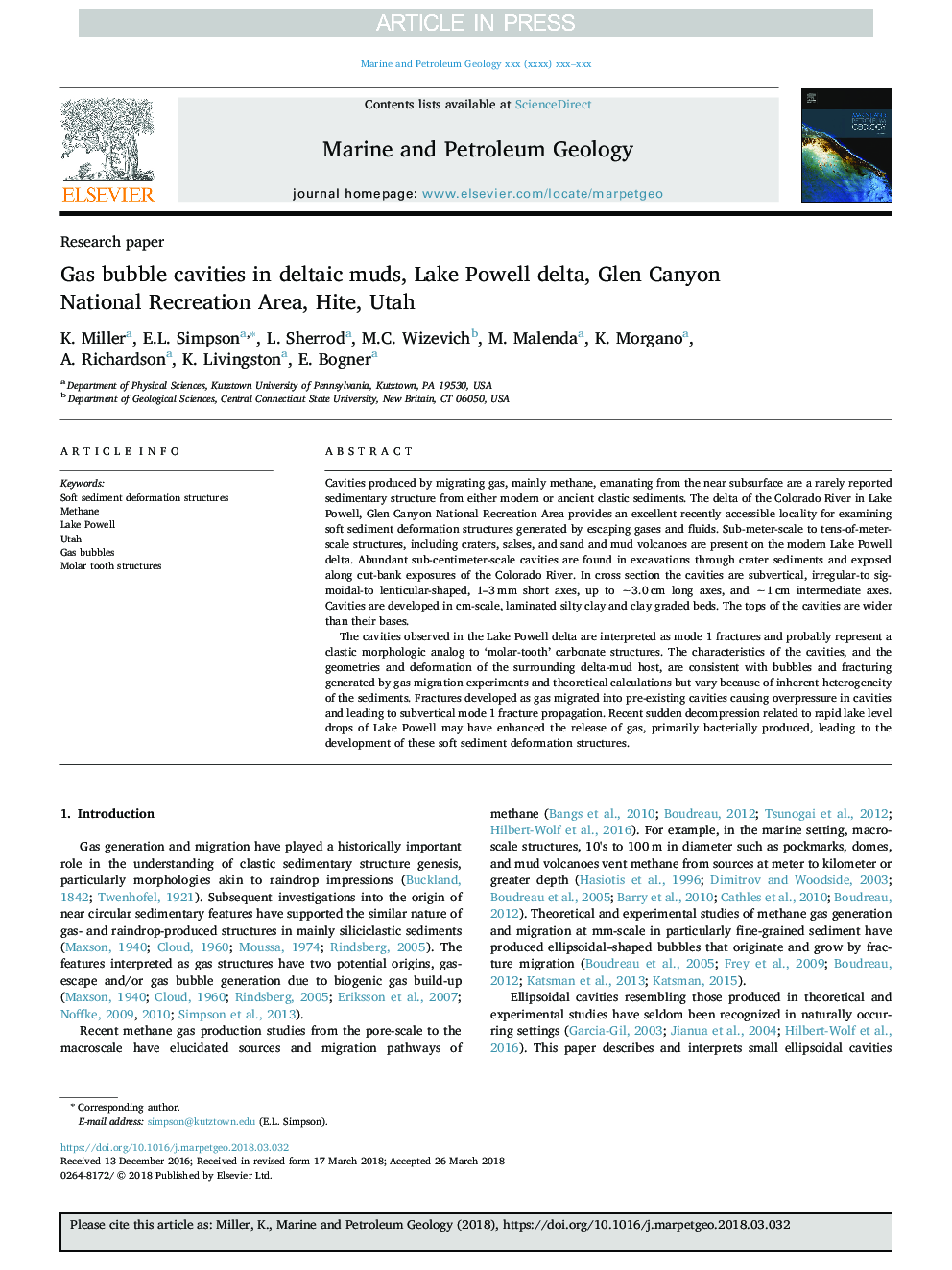| Article ID | Journal | Published Year | Pages | File Type |
|---|---|---|---|---|
| 8909189 | Marine and Petroleum Geology | 2018 | 9 Pages |
Abstract
The cavities observed in the Lake Powell delta are interpreted as mode 1 fractures and probably represent a clastic morphologic analog to 'molar-tooth' carbonate structures. The characteristics of the cavities, and the geometries and deformation of the surrounding delta-mud host, are consistent with bubbles and fracturing generated by gas migration experiments and theoretical calculations but vary because of inherent heterogeneity of the sediments. Fractures developed as gas migrated into pre-existing cavities causing overpressure in cavities and leading to subvertical mode 1 fracture propagation. Recent sudden decompression related to rapid lake level drops of Lake Powell may have enhanced the release of gas, primarily bacterially produced, leading to the development of these soft sediment deformation structures.
Keywords
Related Topics
Physical Sciences and Engineering
Earth and Planetary Sciences
Economic Geology
Authors
K. Miller, E.L. Simpson, L. Sherrod, M.C. Wizevich, M. Malenda, K. Morgano, A. Richardson, K. Livingston, E. Bogner,
